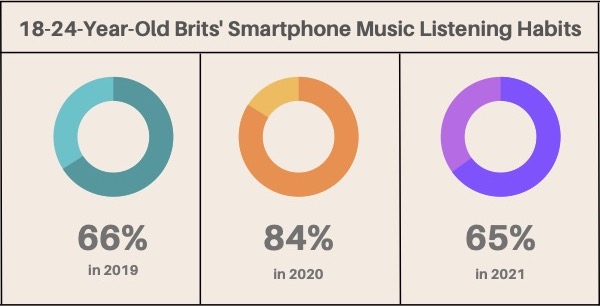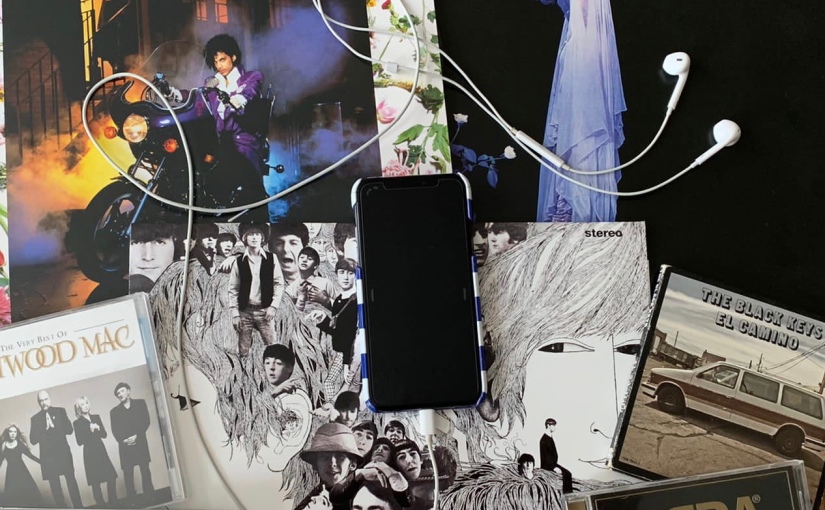The pandemic changed the amount of time 18-24-year-olds spent listening to music on their smartphones, but can this change be maintained?
Image: Bethany-Jo O’Neill
The way in which 18-24-year-olds listen to music changed between 2019 and 2021 as a result of the Covid-19 pandemic.
According to a survey undertaken by YouGov, 18-24-year-olds listened to music on a smartphone more than any other device at an average of 75%. Interestingly, however, a further YouGov study found that 66% of 18-24-year-olds listened to music on their smartphones in 2019, which rose by 18% in 2020. The percentage then fell to 65% in 2021.
This sudden fall could be explained by how people now have less time to maintain the practices they begun during lockdown. On the other hand, the lower percentage coincides with the sustained growth of vinyl and CD sales. The British Phonographic Industry have predicted that vinyl is likely to overtake CD sales in 2021 which highlights this shift in music listening.

Alongside a rise and fall in smartphone music listening, a similar pattern was seen in news consumption.
There was an increase of 16% in 18-24-year-olds who read the news on their phones from 55% in 2019 to 71% in 2020. With the importance placed upon understanding and adhering to Government guidance, this increase was perhaps inevitable.
In 2021, however, this age group used their phones to read the news less than in 2019, with the percentage dropping to 51%.
This fall coincides with reports of news induced anxiety which led individuals to avoid the news altogether in an attempt to escape the fear the pandemic brought.
A final trend that was seen in the YouGov survey is the way this age group read books.
Although the percentage of 18-24-year-olds reading books on their smartphone remained low throughout 2019-2021, there was again a rise and fall across these years.
11% of 18-24-year-olds read books on their smartphones in 2019, which rose to 23% in 2020. This rate did fall in 2021, but not as drastically as other activities with a percentage fall of only 6% in 2021.
Although the pandemic changed the ways 18-24-year-olds use their smartphones, the return to a vaguely normal life meant that the change was unable to be maintained.
